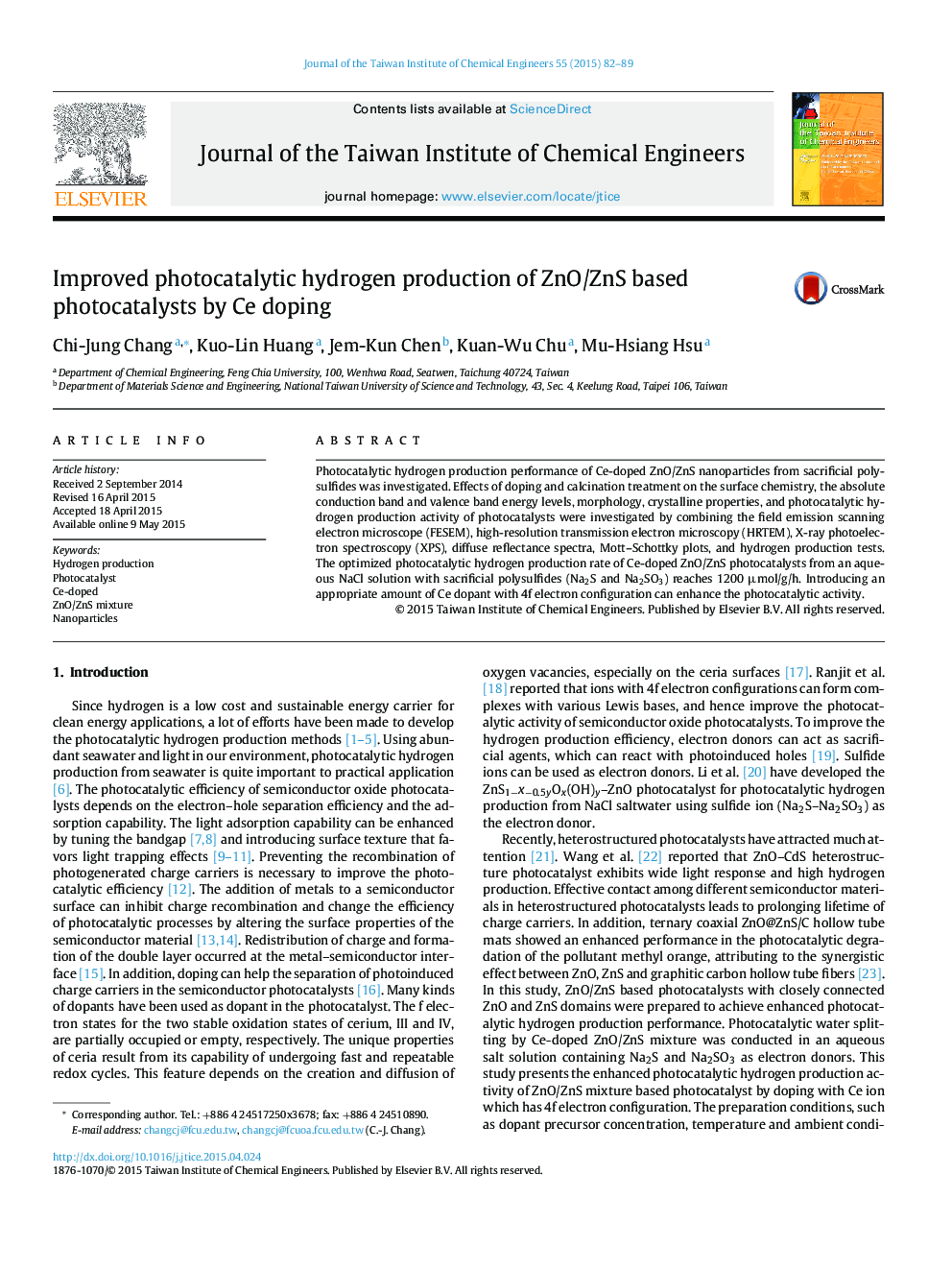| Article ID | Journal | Published Year | Pages | File Type |
|---|---|---|---|---|
| 690711 | Journal of the Taiwan Institute of Chemical Engineers | 2015 | 8 Pages |
•Ce-doped ZnO/ZnS photocatalyst with high H2 evolution activity.•Improved activity due to rapid and repeatable redox cycles between Ce3+ and Ce4+.•Conduction band of photocatalyst more negative than the redox potential of H+/H2.•Enhanced activity by doping Ce ions with 4f electron configuration.•Calcination in N2 improves the crystalline properties and activity.
Photocatalytic hydrogen production performance of Ce-doped ZnO/ZnS nanoparticles from sacrificial polysulfides was investigated. Effects of doping and calcination treatment on the surface chemistry, the absolute conduction band and valence band energy levels, morphology, crystalline properties, and photocatalytic hydrogen production activity of photocatalysts were investigated by combining the field emission scanning electron microscope (FESEM), high-resolution transmission electron microscopy (HRTEM), X-ray photoelectron spectroscopy (XPS), diffuse reflectance spectra, Mott–Schottky plots, and hydrogen production tests. The optimized photocatalytic hydrogen production rate of Ce-doped ZnO/ZnS photocatalysts from an aqueous NaCl solution with sacrificial polysulfides (Na2S and Na2SO3) reaches 1200 µmol/g/h. Introducing an appropriate amount of Ce dopant with 4f electron configuration can enhance the photocatalytic activity.
Graphical abstract Figure optionsDownload full-size imageDownload as PowerPoint slide
